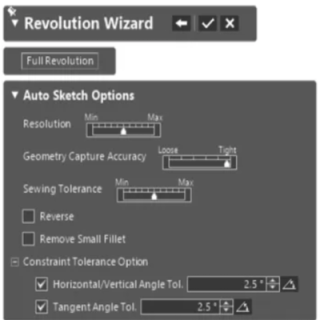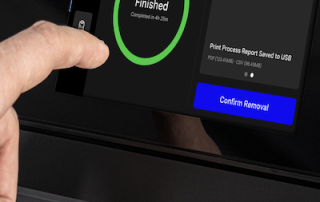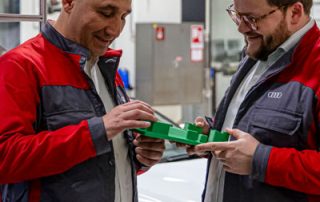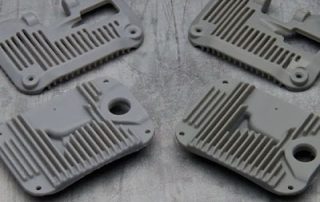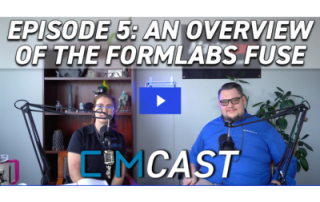What’s New in Geomagic Design X 2024.2
A new version of Geomagic Design X has been release and is now available for you to download and try out. Here are the most important changes and new feature highlights in Geomagic Design X 2024.2: Important notice about plug-ins The following plug-ins have been removed from the built-in plug-in list: Geomagic Capture AICON Konica Minolta VIVID Konica Minolta RANGE5/RANGE7 You can find the instructions for using these hardware plug-ins for scanning on the Oqton Software Support Community and the instructions for the PMT Probe Plug-Ins here. Auto Sketch improvements There are a few updates to make sketching more intuitive and user-friendly. Improved precision in Sewing and Fitting Auto Sketches The algorithm for connecting and sewing Line-Line and Line-Arc auto sketches has been enhanced, ensuring greater accuracy in the precise alignment of sewing results. Now, sewing auto sketches center the results between two connection points, prioritize initial fitting results, apply constraints, and prevent the insertion of new sketches. Additionally, the criteria for fitting arcs at lower angles into lines has been readjusted for improved fitting accuracy. Sewing results in Geomagic Design X 2024.2.0 (left) compared to the sewing results in Geomagic Design X 2024.1.0 (on the right) Please note that these [...]
MAG Orthotics: Transforming Insole Production with 3D Printing Technology
MAG Orthotics, based in Sheffield, UK, is at the forefront of revolutionizing the orthotic and podiatry industry through the adoption of advanced 3D printing technology. By partnering with Additive-X and Fit360, the company is moving away from traditional manufacturing methods, aiming to enhance efficiency, sustainability, and product quality through a fully digital workflow. Challenges in Traditional Orthotics Manufacturing The orthotic industry has long relied on conventional manufacturing processes, which are often labor-intensive and time-consuming. Traditional methods typically involve manual casting and molding, which not only require significant time and labor but also produce substantial material waste. This approach has made it difficult for companies to scale their operations efficiently and sustainably. Some orthotists and podiatrists still send a physical foam impression box (FIB) to MAG Orthotics. FIBs must first be scanned, adding time over a purely digital workflow. Moreover, the bespoke nature of orthotic products means that each insole must be custom-made to fit the unique contours of a patient’s foot. This customization adds another layer of complexity and potential for error in the traditional manufacturing process. MAG Orthotics uses Fit360 software to design their insoles. Embracing 3D Printing for Efficiency and Precision Recognizing the limitations of [...]
Introducing Ultimaker Factor 4 Print Process Reporting
This UltiMaker Factor 4 feature is game-changing Print Process Reporting is included with every UltiMaker Factor 4, bringing users a new level of confidence through precision and validation. That sounds good. But what is Print Process Reporting? And how does it work? In a nutshell, this feature provides detailed, post-print reports within 15 minutes of job completion. It also monitors and evaluates critical print parameters to ensure each print adheres to predefined quality standards. Tracking data on extrusion factors, nozzle performance, build volumes, build plate temperatures and more, Print Process Reporting compiles everything into an easy-to-read, locally accessible report. Any deviations are clearly broken down with metadata, event locations, 3D images, and graphs, enabling quick and precise validation of each part before deployment. Below is an example first page of a print process report: Print Process Report This insight can also save money by identifying and addressing potential issues before they escalate. Its transparency about part integrity and manufacturing processes shines a new light on the inherent variances in additive manufacturing. Up until now, such granular reporting is usually only possible with a lot of manual effort, or going into a completely different price bracket of 3D printers. This sets Factor 4 apart [...]
Audi Sport Benefits from 3D-printed Tools, Jigs, and Fixtures
Audi Sport: 3D-printed tools, jigs and fixtures in a day instead of weeks When the new Audi E-Tron GT was introduced, the Audi Sport Bôllinger Höfe location in Heilbronn, Germany, rapidly needed almost 200 new tools, jigs, and fixtures for its production. Designing these tools costs a lot of time. And outsourcing the production can sometimes take many weeks to months. This is where design automation and 3D printing delivered an unparalleled workflow for Audi Sport. The Audi Sport Böllinger Höfe factory is a high-end car production facility. Their main production focus is on the high-performance Audi R8 and the fully electric Audi E-Tron GT. These cars are the crème de la crème from the renowned German car manufacturer. The assembly line has German efficiency written all over it. The bare cages come in on robotized platforms and are mounted to a top rail. This train of exclusive cars then passes many stations where order-specific parts are installed. It’s difficult to spot two identical cars next to each other, which makes the whole operation even more impressive. Every station has a limited time to assemble parts and install them onto the car. This is why an optimized and efficient workflow is [...]
Formlabs New General Purpose 3D Printing Resins
Formlabs’ New General Purpose Resins Make 3D Prints Faster, Stronger, and More Affordable Since Formlabs’ Grey Resin was announced in 2011 and shipped with the first iteration of Form 1, Formlabs customers have relied on General Purpose Resins for the majority of their printing. Over a decade and 400 million parts later, that still holds true; Formlabs General Purpose Resins are the backbone of workflows, from prototyping to production. The release of Form 4 opened up the opportunity to develop resins optimized for printing on the new hardware. Six updated resins are now available, including four General Purpose Resins, Fast Model Resin, and Precision Model Resin. The new General Purpose Resins for Form 4 — Grey Resin V5, Clear Resin V5, White Resin V5, and Black Resin V5 — are now available with enhanced aesthetics, improved mechanical properties, and faster print speeds. Advancements to General Purpose Resins Formlabs collected extensive feedback on their popular General Purpose Resins to develop new formulations that are designed to both leverage the Form 4 hardware for improved performance and deliver more value to users. General Purpose Resins are versatile materials with a wide range of user applications including form and fit prototyping, models and props, 3D printed [...]
An Overview of the Formlabs Fuse- CimCast
An Overview of the Formlabs Fuse- CimCast In our fifth episode of CimCast, we discuss the Fuse 3D printers from one of Cimquest's vendors, Formlabs. Learn more: https://cimquest-inc.com/formlabs-fuse-1-new/


